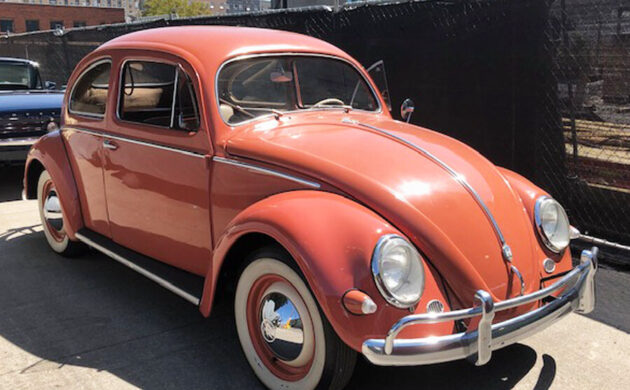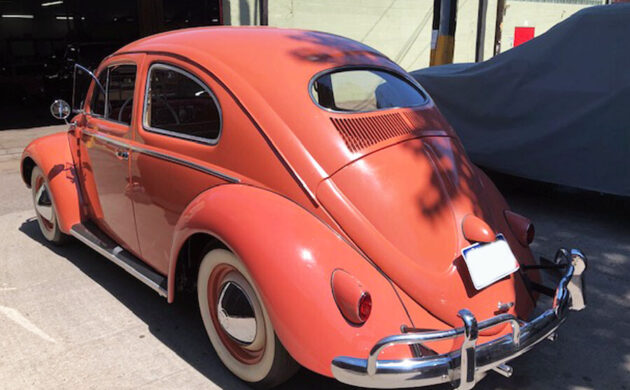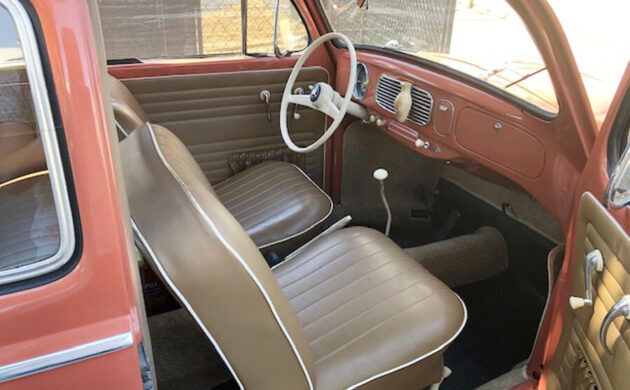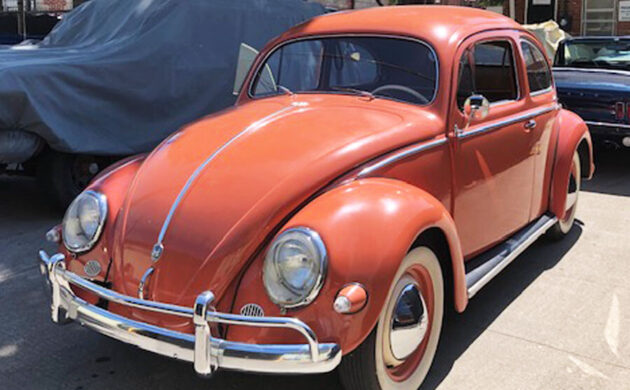When a manufacturer hits upon a winning formula with one of its models, it is common to stick with that formula for an extended period. Volkswagen subscribed to that theory with the Beetle. It remained in production for an incredible sixty-five years with little more than evolutionary changes. Once considered affordable commuter options that buyers could own for a pittance, they have become one of the “must-have” cars in the current classic world. Our feature car was part of the same family for fifty years and has recently emerged after twenty-five years in hibernation. It presents extremely well and is ready for a spot of classic motoring with a new owner behind the wheel. The Beetle is listed here on Barn Finds Classifieds in Denver, Colorado. You could drive off into the sunset by handing the seller $24,500.
The seller indicates that until recently, this Beetle had been a member of the same family for fifty years. Its owners treated it to some restoration work about twenty-five years ago but almost immediately placed it into storage. It recently emerged, and its overall condition suggests the storage environment must have been virtually ideal. The first point to note is that it has remained rust-free, which is always a consideration with any classic purchase. Potential buyers can be confident that the grinder and welder can stay in the cupboard when they take this VW home. The paint color is a mystery because it doesn’t appear on any of the period Volkswagen Color Charts I hold. It may be from a later model year, but I’m unwilling to criticize the car on that point. When the seller received this classic, they repainted the fenders due to scratches inflicted when it was in storage. They performed no other work beyond the usual washing and polishing. The car presents well, and I would classify its condition as an excellent driver-grade vehicle. There are no major panel or paint flaws or defects, although the seller notes that both doors have older filler. It is hard to spot and shows no signs of deterioration. The panel gaps are as tight and consistent as we would typically expect from Volkswagen, while the chrome and glass present nicely. The Beetle rolls on a set of whitewall tires which lift the presentation to a higher level.
Once the buyer hands over the cash for this VW, they won’t need to spend a dime on its interior. It received a refresh as part of the restoration and has done little work since. The vinyl upholstered surfaces look perfect, with no wear or other problems. The painted surfaces are as impressive as the exterior, while the story is the same with the carpet. There are no aftermarket additions, and even the standard two-spoke wheel and matching shifter knob are intact. If the exterior condition is capable of receiving positive comments at a Cars & Coffee, the interior will increase that interest.
The drivetrain design of the original Beetle was revolutionary and incredibly clever. Volkswagen loved it so much that they left it essentially untouched throughout the entire production run. It increased the engine capacity and power occasionally and twiddled with the suspension and brakes but decided there was little point in reinventing the wheel. By designing the car as a rear-engined model, they achieved a low nose and one of the most aerodynamically efficient bodies seen on a production car to that point. Constructing the engine primarily of aluminum reduced weight over the car’s rear and allowed for efficient cooling. By opting for air rather than water to cool the engine, they reduced vehicle weight, which helped performance in a vehicle with modest power output. This Beetle features its numbers-matching 1,192cc flat-four engine that produces 36hp. The power finds its way to the rear wheels via a four-speed manual transaxle, and while it may not be lightning-fast, that wasn’t the aim of the exercise with the Beetle. The design objective was for the company to produce a light and efficient family car that could cruise happily for at least four continuous hours on the German autobahn at a steady 60mph. The designers met that goal, and this Beetle should still be capable of repeating that performance. The seller indicates the previous owner rebuilt the engine before placing it in storage, and they have returned the car to a roadworthy state. All the buyer needs to do is climb aboard and turn the key because this classic drives like a dream and is ready to go.
Someone once said that when you’re on a good thing, you should stick to it. Volkswagen subscribed to that theory with the Beetle. If you placed this car beside one of the final ones to roll off the line in 2003, you would have no trouble picking the differences between the two. However, identifying the changes year-by-year is significantly more difficult because the company saw little point in interfering with a winning formula. From the late-1960s until the 1980s, values plummeted as Asian, and other European manufacturers brought more modern and refined models to the market. The worm has turned, and it is common to see original and unmolested examples sell for $30,000. If the car is pristine, that figure can top $40,000. The seller wants considerably less for this 1956 Beetle, making it a German classic worth a closer look.










I believe this color is called coral and I have seen this before. Color works nicely with the linen interior. I would pay the asking price if the body checks out as nice as it looks. Denver has a really dry climate so I wouldn’t expect to see corrosion or paint blisters when I worked in Denver I would often times see classic cars with their original patina and hardly any rust through so this car might have minimal rust repairs.
Thank you so much for the feedback on the paint shade, alphasud. I believe that you’re right and that it is Coral. I tend not to make the call unless I’m certain. Sometimes different lighting, camera quality, and the wonderful world of varying computer monitors and video cards can make it difficult to be sure with a digital image. I hope you enjoyed the article.
I too have seen this color but couldn’t have come up with the name. My first impression on this car is you just don’t find too many Beetles in this condition, and especially in this color. Good write up Adam. Nice Car!
Have a history with VWs, for about 50ish years. Yes, if you look at the photos of the dash, which I bet is original, that is Coral Red. VW always had great, somewhat understated colors in their early years. Have seen a number of Coral Red cars. GREAT VW color!
Dealer says it is an Indiana car from an estate but it looks sharp. Maybe the salvage title puts some people off ?
Seems like a reasonable price for a nice “Oval”. I’m surprised someone hasn’t snagged it up by now.
Needs a change of colour, a stripe, a number 53 on it, and have it go meep meep.
Nice VW! This was a common color for that model and year. I dont know the exact color name either but I called it tomato soup red. This “57 VW was my first brand new car as a bright new college graduate from UCLA. And, what a change it was getting used to this little auto from my first ever car. I had just sold my beloved 1941 Cadillac 60 Special Fleetwood that I had driven since my second year in high school. Just starting out in the real world I needed something that got better than 8 to 10 MPG. I also remember being on a waiting list for almost six months to get the VW. Full price was $1963.00. Kept the VW for about four years and then bought a 1958 Porsche Super Speedster from a friend. Wish I had kept that, eh? Those are now going at auction for $365,000 or more!!
The first thing that caught my attention was the very beautiful color but I have never seen it in this year of manufacture.
Another item that caught my attention was the rear side windows. As far as I know they were fixed. Opening only after 1963. (here in Brazil)
You are right, the cars came with fixed rear windows. That said, the “pop out” rear windows were a hot aftermarket item. Highly sought after today! They were a nice addition, because a VW was so tight, that with the windows rolled down, even partway, there was quite a “drumming sound/affect” — simply because the interior was so well sealed that there was nowhere for the trapped air to escape. Opening the front quarter “vent” windows helped a lot, but the pop out windows totally solved the drumming issues.
Were the engines in these cars aluminum ? I’ve always thought they were magnesium
You are right. Magnesium case, cast iron cylinders, aluminum heads. Maybe the real early ones had an aluminum case like the early and later 911 engines.